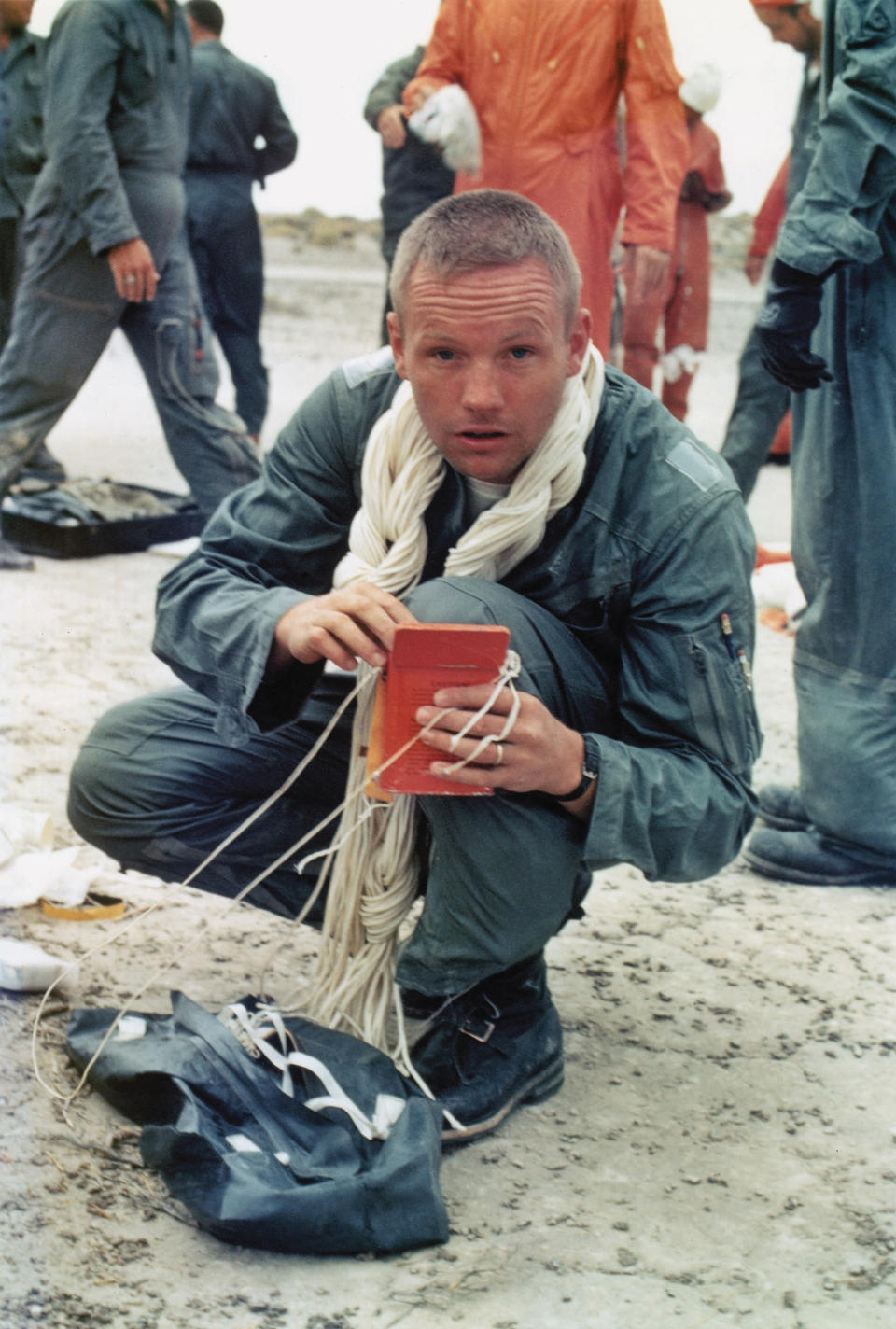Never before seen photos of Moon landing mission
It’s one of humanity’s greatest achievements but there’s still some pictures of the moon landing the world has never seen.
Stunning photos, which have been released to mark fifty years since the landmark occasion, show all three members of Apollo 11’s crew looking quietly confident standing before the newly unveiled Saturn V space rocket and a rare perspective of the watershed moment of Mr Armstrong planting a flag on the moon.
The incredible images are included in ‘Picturing Apollo 11: Rare Views and Undiscovered Moments’, by JL Pickering and John Bisney, due for release next month.
Mr Bisney was less than 20 kilometres away from the launchpad on July 16, 1969, when Apollo 11 launched.

“The story of the first time humans landed on and explored our Moon has been told many times—by the Apollo 11 astronauts, by mission controllers, by NASA officials and historians,” he said.
“Yet we believe this book will help to fill in visually the events surrounding this landmark in exploration, since a large percentage of the images you see have never been published previously.”
Mr Bisney was one of a million-strong crowd in Florida who watched the three Apollo 11 astronauts sat atop the Saturn V rocket at the Kennedy Space Center - the three-stage 110-metre rocket would soon use its 3.4 million kilograms of thrust to propel them into space and into history.
Four days and 386,000 kilometres later, on July 20, 1969, Mr Armstrong and Mr Aldrin became the first humans ever to land on the moon in their Eagle lunar module, as Collins watched on from nearby orbit. Soon after, Mr Armstrong became the first person to walk on the moon.

As he took his first step, Armstrong famously uttered his immortal words: "That's one small step for man, one giant leap for mankind."
An estimated 500 million people worldwide tuned in to watch him take his historic first steps on the Moon, the largest television audience for a live broadcast at that time and about 14 percent of the global population.
After spending a night sleeping on the moon, the pioneering astronauts left several artefacts on the lunar surface including a plaque which read: "Here men from the planet Earth first set foot on the moon—July 1969 A.D.—We came in peace for all mankind."
Eight days after lift-off, the brave trio of Mr Collins, Mr Aldrin and Mr Armstrong safely splashed down in the Pacific Ocean at 12.50pm on 24 July, securing their place in the record books.

“When putting a book together, there is a fine line between choosing photos that are of interest as rare or unseen as opposed to using more familiar images that might, in some cases, tell a better story,” Mr Pickering said.
“I have also become aware that photos I consider common are not always viewed that way by others.
“This applies especially to younger people, who may be seeing the ‘greatest space hits’ for the first time.
“That being said, this project, like our previous efforts, consists of as many unpublished images as possible, and we hope they give audiences of all ages some new views of the golden era of space flight.”

Australscope
Do you have a story tip? Email: newsroomau@yahoonews.com.
You can also follow us on Facebook, download the Yahoo News app from iTunes or Google Play and stay up to date with the latest news with Yahoo’s daily newsletter. Sign up here.


